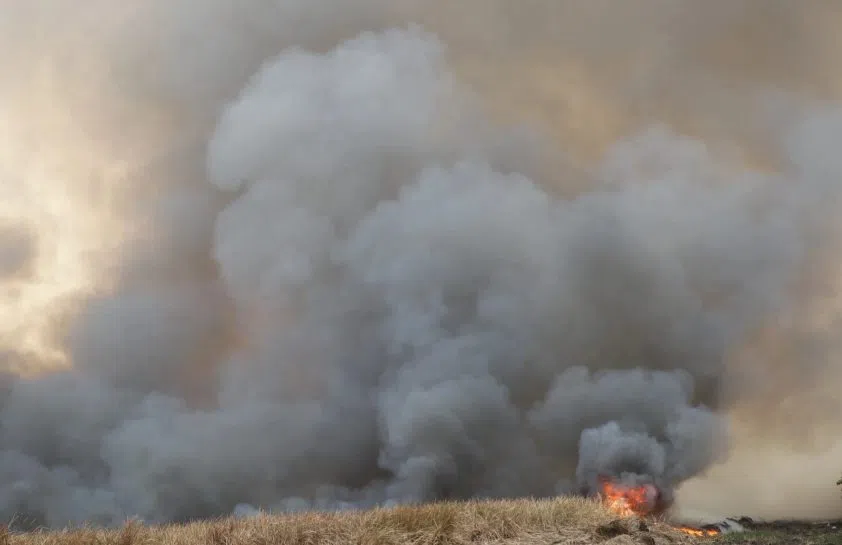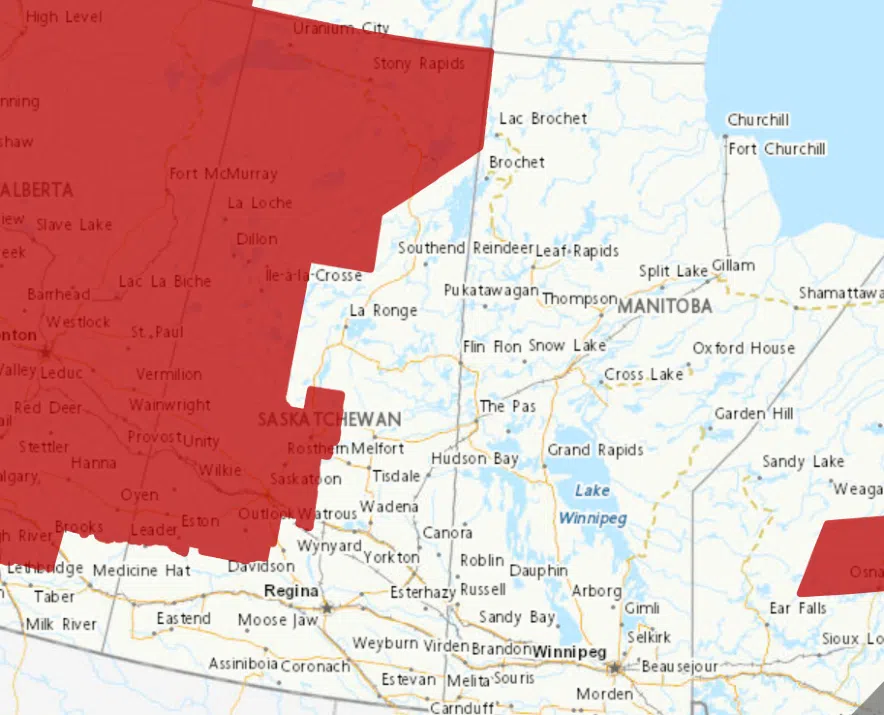Air quality warnings remain over a large area of the province on Monday, with wildfire smoke expected to affect many areas into Tuesday.
Heat warnings that covered areas from just north of Humboldt stretching as far north as the Northwest Territories over the weekend have been removed, but Environment Canada says the smoke will bring air quality considered to be “high risk” or “very high risk” to areas stretching from Lloydminster to Saskatoon, as well as northern Saskatchewan.
Read more:
- Saskatchewan water rescues prompt warning from RCMP
- La Ronge man charged with arson after allegedly starting major Weyakwin-area wildfire
- Mosquitoes are on the hunt. Here’s how to deal with their bites.
The air will be particularly bad in northern areas like Île-à-la-Crosse, where local officials in the northern village of Île-à-la-Crosse on Saturday asked people to leave Canoe River Subdivision and campers to leave South Bay War Veterans Park after the previously contained Muskeg and Trail fires spread.
Flames breached Highway 155 at Canoe River at one point. The highway re-opened Saturday.
“We are advising those in this area to vacate their properties for safety reasons,” the village said in a post on Facebook. No official evacuation has been ordered.
Air quality of “very high risk” means everyone should reduce or reschedule strenuous activities. People at risk should avoid outdoor activities altogether, Health Canada says.
Air quality of “high risk” means people at risk should reduce or reschedule strenuous activities outdoors. Children and seniors should “take it easy.” The general population should consider reducing or rescheduling strenuous activities if they start coughing or their throats become irritated.
Environment Canada’s air quality index can be found here. You can take a look at the ratings in communities across your province or territory.
A rating of 1-3 is low risk, 4-6 is moderate risk, 7-10 is high risk and over 10 is very high risk.
The risk designations can change regularly in the same community, Environment Canada says, so it’s important to keep checking the air quality forecast.
The government agency lists the various health conditions that put you at higher risk at this website.
There were 48 active fires burning in Saskatchewan on Sept. 1.
Saskatchewan Public Safety Agency (SPSA) said in a 12:30 p.m. report that three of those blazes were not contained.
SPSA said another 35 of the fires were under ongoing assessment and firefighters were protecting values in three. Seven fires were considered contained.
Contained means suppression action is taking place and the fire is not expected to grow in size, ongoing assessment means the fire is being monitored regularly to assess risk to values in the area and not contained means suppression action is taking place but the fire is expected to grow in size, according to SPSA. Protecting values means a fire is active and action is focused on protecting things like cabins and infrastructure.
— with files from Canadian Press
Read more:












